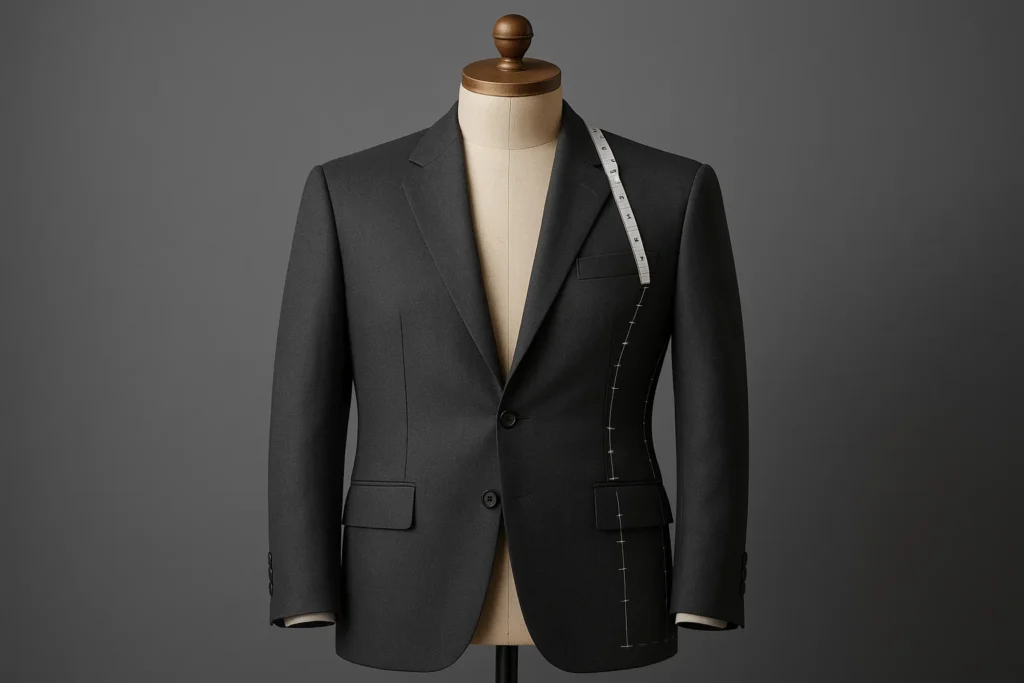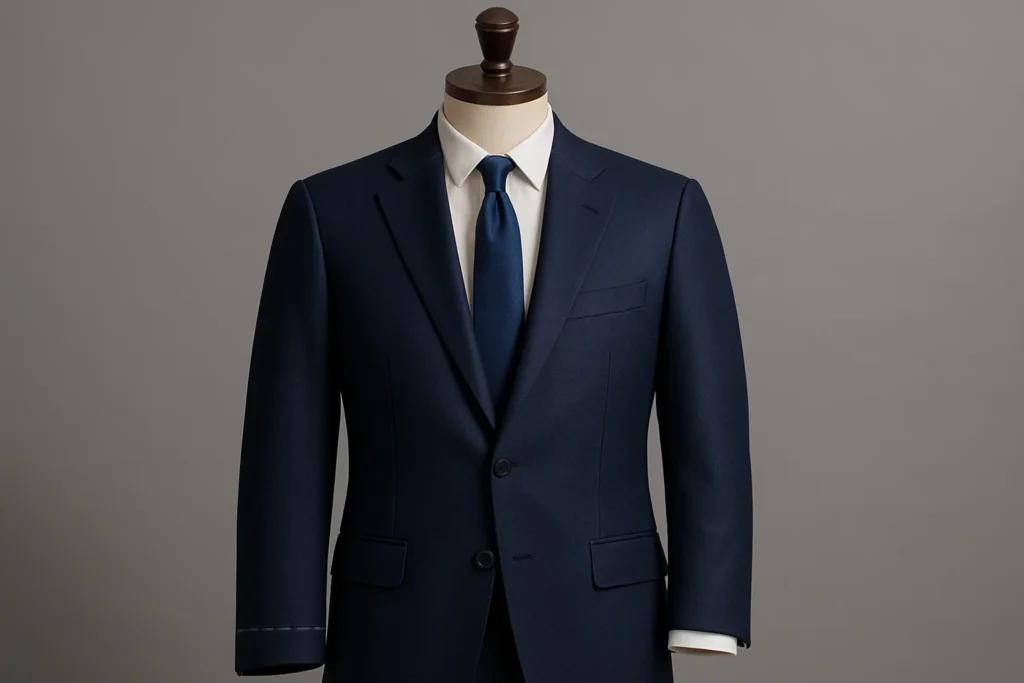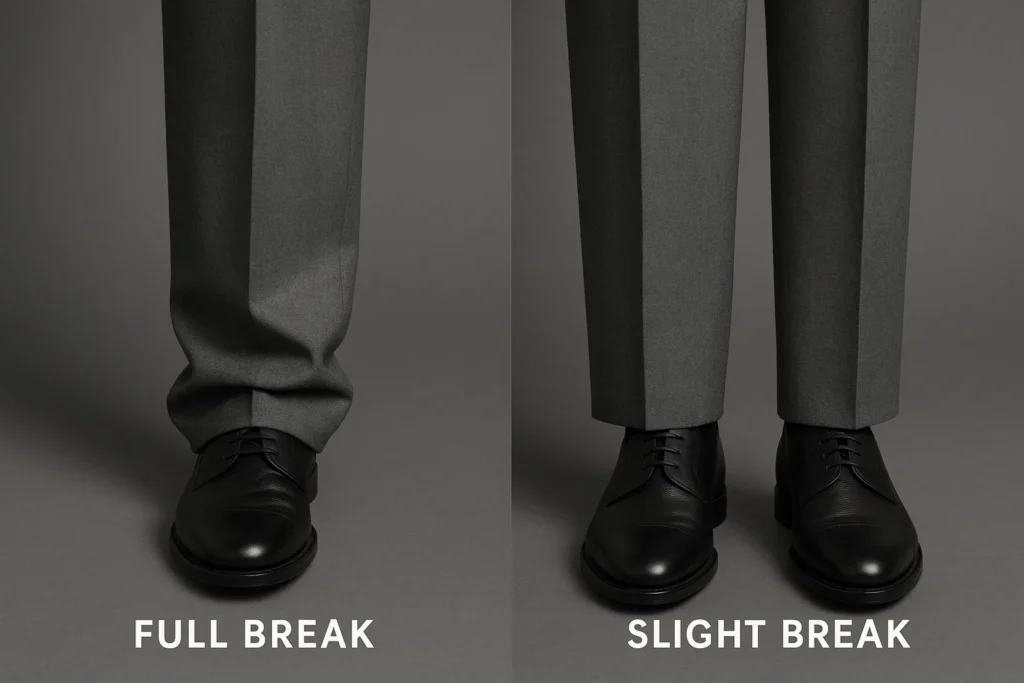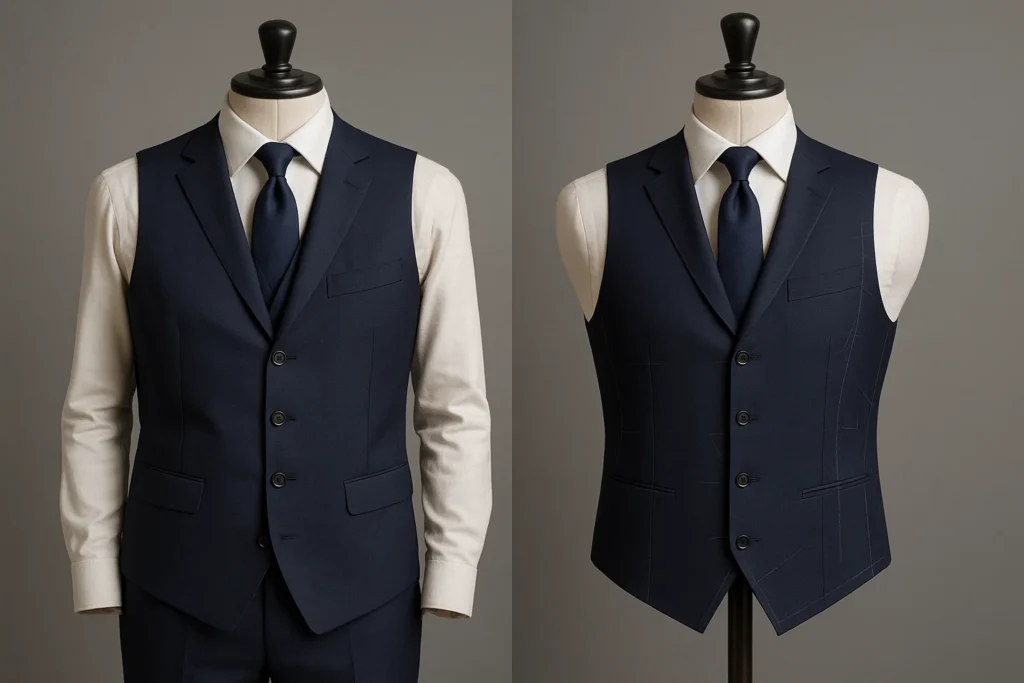Suit Alterations: Men’s Suit Alterations Complete Guide
- Home
- Formal Dresses
- Suit Alterations: Men’s Suit Alterations Complete Guide
Suit Alterations: Men’s Suit Alterations Complete Guide
An off-the-rack suit can look good, but a tailored suit looks exceptional. It’s the difference between a garment that’s made to fit a mannequin and one that’s sculpted to fit you. That’s where we come in.
At Precision Alterations, with over 15 years of experience, we’ve been the trusted partner for countless men in Phoenix, Tucson, and across the country, transforming their suits from simply “fitting” to fitting perfectly. We understand that a suit is more than just fabric and thread; it’s a statement of confidence, style, and self-respect.
So, how do you achieve that flawless fit?
It all starts with understanding the art and science of suit alterations. Whether you’re a groom preparing for your wedding day, a professional aiming to make a powerful impression, or a style-conscious individual who appreciates the finer details, this guide will walk you through everything you need to know about men’s suit alterations.
Understanding the Basics of Suit Alterations
At its core, suit alteration is the process of adjusting a ready-made suit to your specific body shape. It’s about refining the fit to enhance your silhouette, improve comfort, and elevate your overall appearance. The two fundamental concepts in tailoring are:
- Taking in: This involves making parts of the suit smaller by sewing the seams deeper into the garment.
- Letting out: This means making the suit larger by releasing extra fabric from the seams.
Most high-quality suits are designed with a “seam allowance” extra fabric hidden within the seams that allows a skilled tailor to let out the garment without compromising its structure. This is a key difference between a well-made suit and a lower-quality one, and it’s something our master tailors at Precision Alterations are experts at identifying and utilizing.
While some minor adjustments can be done at home, a professional tailor is essential for achieving a truly impeccable fit.
A suit is a complex garment with intricate construction, from the lining and canvas to the pockets and padding. An experienced tailor understands how each alteration affects the overall balance and proportion of the suit, ensuring that every adjustment is executed with precision and care.
Common Jacket Alterations Every Man Should Know
The jacket is the soul of your suit. It frames your silhouette, sets the tone for your style, and holds the power to create the most striking transformations. Getting the jacket right is 90% of the battle, and a few key adjustments can take it from looking okay to looking spectacular.

Adjusting Sleeve Length
Are your hands getting lost in your sleeves? Or are your cuffs riding halfway up your forearm?
A perfectly tailored jacket ends at the wrist bone and allows just a glimpse of shirt cuff, about a quarter to half an inch. It’s a subtle detail that signals impeccable attention to detail. While a straightforward hem is standard, if you have a jacket with functioning buttonholes (often called “surgeon’s cuffs”), a master tailor must shorten the sleeve from the shoulder. It’s a complex job, but it’s exactly the kind of precision work we handle every day.

Taking In or Letting Out the Waist
This is the secret to achieving that coveted “V” shape in your torso. Most off-the-rack jackets are cut fairly straight to fit a wide range of body types. By taking in the waist through the side or center seams, we eliminate the boxy look and contour the jacket to your body.
The goal is a snug fit that doesn’t pull or create an “X” shape when you button the top button. It should hug you just right, creating a clean, tapered line that is both slimming and powerful.
Shoulder and Chest Adjustments
Shoulder alterations are the most complex and costly procedures in tailoring. An ill-fitting shoulder can’t easily be hidden.
The seam of the shoulder should end precisely where your natural shoulder does. If it’s too wide, you’ll get a sloppy, padded look. If it’s too narrow, you’ll see a tell-tale divot or bump at the top of your arm.
Trouser Alterations That Improve Fit and Style
Don’t neglect the bottom half of your suit!
Your trousers are the foundation. Poorly fitting pants can make even the most perfect jacket look sloppy. But with a few tweaks, they can provide all-day comfort and impeccable style. Professional suit alterations ensure that your trousers match the elegance of your jacket.
Waist and Seat Adjustments
Your trousers should sit comfortably on your natural waist without needing a belt to hold them up (a belt should be an accessory, not a necessity).
We can easily take in or let out the waistband for a perfect fit. Just as important is the seat. You want a smooth drape not so tight that the pocket linings show, and not so loose that you have sagging fabric. A clean fit in the seat makes you look sharper and more put-together from every angle.
Hemming and Choosing the Right Break
A break refers to the small fold or crease of fabric that forms at the bottom of your trousers where they meet your shoes. The amount of break is a personal style choice:
- No Break: The hem just kisses the top of your shoe. It’s a sharp, modern, and very clean look, perfect for slimmer-cut trousers.
- Slight/Quarter Break: A subtle dimple in the fabric. This is the versatile, can’t-go-wrong option that works for almost everyone.
- Full Break: A significant fold of fabric. This is a more traditional, classic look, often preferred for wider-leg trousers.
Choosing the right break completes your vertical line and shows you know your stuff. This seemingly small adjustment demonstrates how thoughtful suit alterations elevate your entire look.

Tapering the Legs
Want to instantly modernize an older suit? Taper the legs. This alteration narrows the trouser from the knee down to the ankle, creating a cleaner, more contemporary silhouette.
It’s a fantastic way to update a classic-fit suit without buying a new one. The key is to follow the natural shape of your leg—it should be slim, not skin-tight. This is one of the most requested suit alterations for men who want a modern edge.
Vest Alterations for a Three-Piece Suit
The vest, or waistcoat, is the finishing touch for the man who wants to achieve a new level of sartorial elegance. The rules for a vest are simple but strict.
First, it must be long enough to completely cover the waistband of your trousers, so no shirt fabric is visible between them.
Second, it should lie flat against your chest and stomach. We can take in the side seams and adjust the back strap to ensure a snug, clean fit that highlights your torso without feeling restrictive. Perfectly altered vest ties the entire three-piece look together with undeniable polish, exemplifying how thoughtful suit alterations create harmony across every piece.

Tips for Getting the Best Results from Alterations
- Bring your full outfit: Wear or bring the dress shirt and shoes you’ll pair with your suit to ensure accurate measurements.
- Share your vision: Tell your tailor how you want the suit to feel and where you’ll wear it, so the alterations match both style and function.
- Plan ahead: Book your fitting a few weeks before major events. This gives enough time for quality suit alterations without last-minute stress.
Frequently Asked Questions About Suit Alterations
We hear a lot of the same questions from our clients in Phoenix and Tucson, so we’ve gathered the most common ones here to give you clear, expert answers.
How much do suit alterations typically cost?
Basic fixes like hemming are affordable, while complex jobs such as shoulder adjustments cost more.
How long does it take to alter a suit?
Most alterations take one to two weeks, though rush services are often available for urgent needs.
Is it worth altering a cheaper suit?
Yes, a well-fitted inexpensive suit almost always looks better than an expensive suit that fits poorly.
How do I know if my suit can be altered?
Most suits can be adjusted one to two sizes, as long as the shoulders fit properly from the start.
Do I need to clean my suit before alterations?
Yes, it is best to clean your suit beforehand so the tailor works with the true fit of the fabric.
How many fittings are needed for alterations?
Most suits need one fitting and a final try-on, while complex changes may require two or more.
Final Words: The Power of a Perfectly Fitted Suit
From the boardroom in Phoenix to a wedding under the Tucson sky, your suit is your armor for life’s most defining moments. It’s not just about looking better; it’s about feeling capable of anything.
Don’t let an imperfect fit hold you back. The difference between a good suit and a great one is merely a matter of precision. Let our 15 years of experience in expert suit alterations work for you.
Ready to experience the transformative power of a perfect fit? Book your private consultation with our master tailors at Precision Alterations today and let us craft a silhouette that is uniquely yours.
SUBSCRIPTION
Subscribe to our newsletter
Store Hours Phoenix
Monday – Friday
10:00am – 06:00pm
Saturday
10:00am – 04:00pm
Sunday
Off
Tucson Store Hours
Monday – Saturday
09:00am – 07:00pm
Sunday
11:00am – 05:00pm
Contact Us
- +602 2750599
- precisionalterations@yahoo.com
- Arcadia Crossing 4539 E. Thomas Road, Suite 104, Phoenix, AZ 85018
